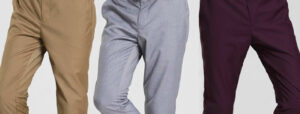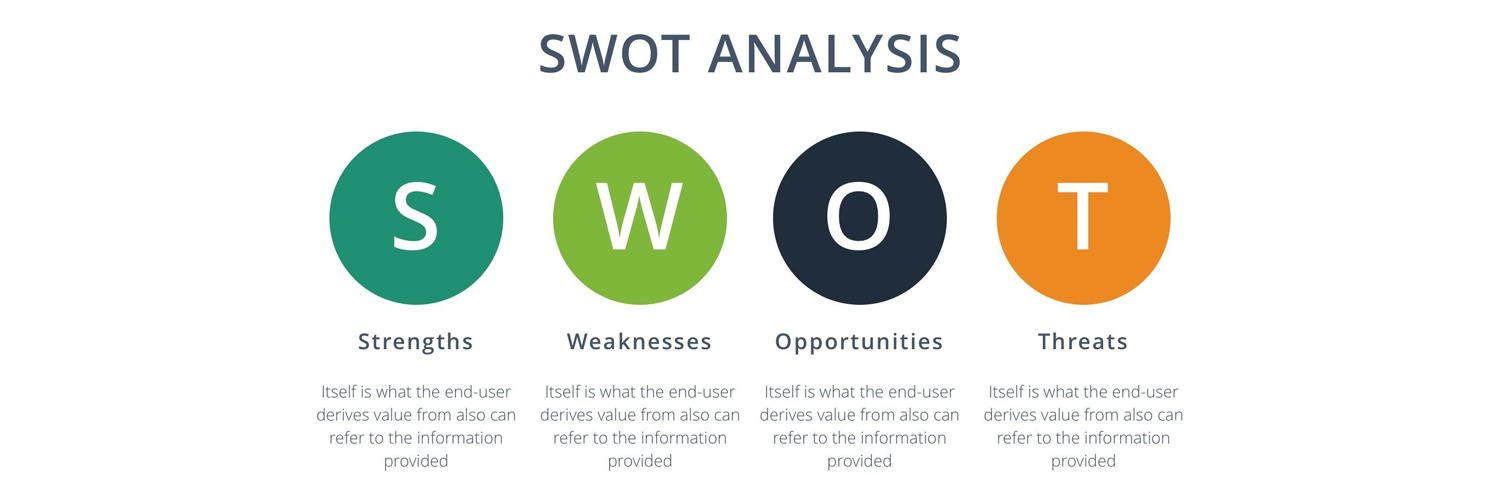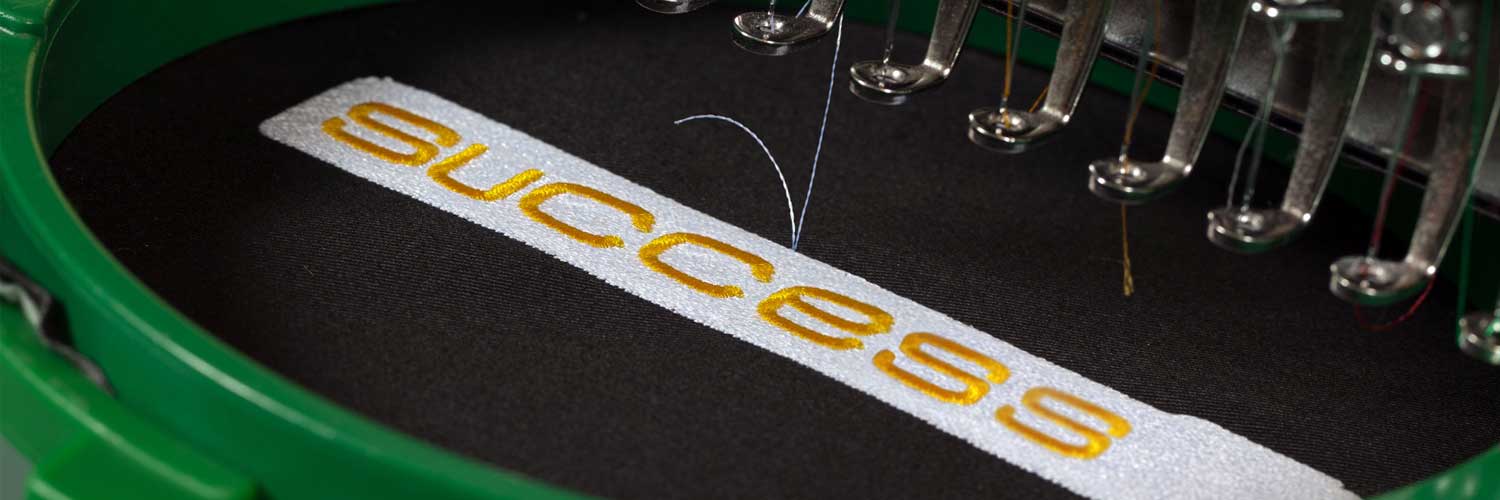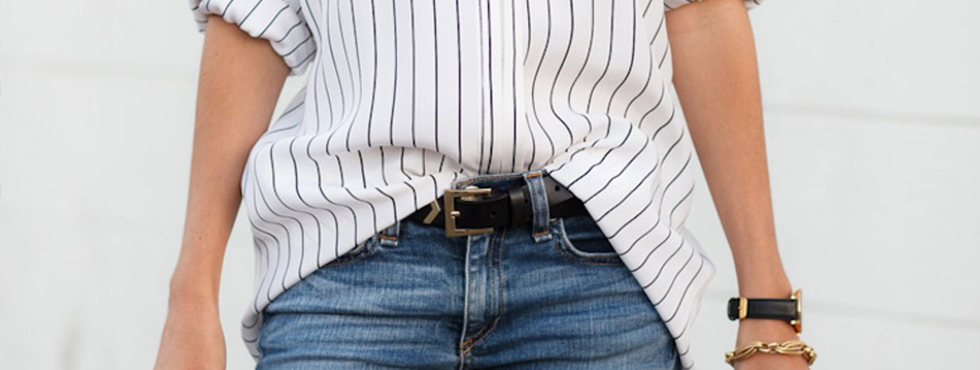If you want to start a clothing brand, passion for fashion and designing are necessary components for success in the clothing industry. Fashion industry is growing exponentially every day! And lately. We have seen many entrepreneurs launching their brands and taking roads to success in the clothing business.
For the past 10+ years, we have been helping entrepreneurs, small brands, and startups establish their businesses from scratch until they are live in the market. The clothing line business plan is an essential part of any business with several advantages.
To make your business successful, you will need a strong business plan, and to help you create a strong and well-defined business plan, here is an article guide that will help you from every aspect.
We will provide you with background information and the clothing line business plan’s characteristics. As part of our service, we will assist in helping you understand why planning is essential and its long-term advantages. To facilitate the process, we take an incremental approach so that you can follow the whole process smoothly and quickly.
So let’s get started:
What is a clothing line business plan? Everything you need to know about it.
The business plan is a formal document that enables the entrepreneur to identify and examine the business values, mission, goals, or anything that defines the business. The business plan can help evaluate the amount of funding required to get the company started, and this plan can help assess the expected profits.
In the 03 initial years of your business, this plan will help you by serving as a roadmap. When your clothing line starts selling, you can use a business plan, and see if your business is growing by companying the estimated figure in initial forecasts.
A strong business plan plays an essential role in making your clothing business successful, and it helps streamline your short-term and long-term goals.
What is a Clothing Line Business Plan?
The business plan is a formal document that enables the entrepreneur to identify and examine the business values, mission, goals, or anything that defines the business. The business plan can help evaluate the amount of funding required to get the company started, and this plan can help assess the expected profits.
In the 03 initial years of your business, this plan will help you by serving as a roadmap. When your clothing line starts selling, you can use a business plan, and see if your business is growing by companying the estimated figure in initial forecasts.
A strong business plan plays an essential role in making your clothing business successful, and it helps streamline your short-term and long-term goals.
Why Do You Need a Business Plan For a Clothing Line?
If you are launching a clothing line and plan to switch it to a large scale or extend your existing clothing line business, you need a clothing brand business plan to handle your clothing business. If needed, then a good plan can help raise funding.
Moreover, it increases your chances of growing and succeeding in the fashion industry. Your business is a vital document that states everything about your business and needs to be updated as your company grows and moves towards success.
How to a Business Plan For a Clothing Line?
Here is a detailed guide on how you can write a business plan for your clothing business, and the critical components you should add to your business plan.
Essential parts that makes up a Good Business Plan for a Clothing Line
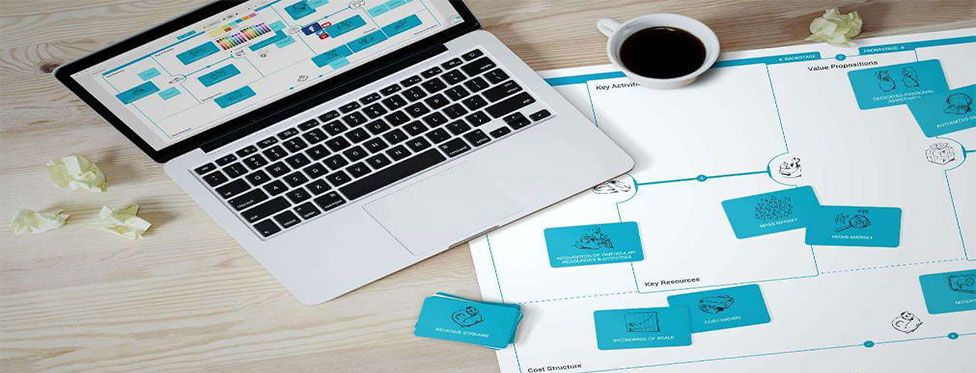
Executive Summary
The executive summary section is like an introduction to your business plan. But the good practice is to write this section last, as it summarizes your business model and plan. The main objective of your business plan is to engage the reader and give them a clear idea about the business that you are running.
For instance, you should mention if you are a startup or already running a clothing line.
Next, you should mention the type of industry you are working in. In this case, it’s the Apparel industry. You can mention the type of clothing line that you are operating in this industry. Tell a little overview about your target customers. Tell a little bit about your marketing plan and financial strategies.
Analysis of Industry
Here, you need to mention an overview of the industry you are working in. Some think it’s an unnecessary step, but it is helpful in multiple ways.
Firstly, it helps you educate yourself about the apparel industry, giving you an idea about the industry you are working in. Researching it can help you with the market trends in the fashion industry that you should follow to rank up in the market.
An analysis of your industry in your business plan makes a powerful statement about who you are as an authority in that particular field.
This blogs answers following questions
– Is the industry growing or shrinking?
– How extensive is the clothing line?
– Who are the major players in the market?
– What are the latest trends?
– What’s the growth rate of the industry in the coming five years?
Customer Analysis
In this section, you need to tell about the customer market you are targeting, and you can mention details about the target market you will be serving. Your customer segmentation could be sports enthusiasts, athletes, youth, college students, techies, etc.
The target market you choose to serve plays an essential part in the type of clothes you are selling. You can mention customer demographic and psychological profiles, as it discusses your customers’ age, location, genders, fashion type, preferences, and income levels.
The psychological profile defines the needs and wants of your profile. It’s simple, the more you understand their needs, the more you can attract the customer to your brand.
Competition Analysis
This includes a detailed analysis of direct or indirect competitors of your business. There are 02 types of competitors direct and indirect.
Direct Competitors – refers to the other brands or businesses targeting the same brands or products and selling them to the same customers.
Indirect Competitors – refers to the brands and business that offers slightly different products to the same group of customer that you are targeting.
You can mention the other competition to your clothing line business. For each of the competitors, you can present an overview of their business and mention the strength and weaknesses of their business.
It’s always a good practice to work on your competitor so that you can know everything about your competitor.
– What products or services are they offering?
– Which customer group are they targeting?
– What is their pricing?
– What is their weakness?
Marketing Plan
The marketing plan includes the 4’ps of marketing i.e.
Product: Here, you need to reiterate the type of clothing you will sell and mention in your company analysis. Be sure to mention the details about the product you will sell.
Price: Here, you need to mention the product’s pricing that you are selling. Also, you can compare the prices of your product with your competitor’s pricing.
Place: It refers to the location where you will be selling your products. You can mention the location in the document.
Promotions: Here comes the final P. This p stands for promotion. You can mention your promotional activities through which you will be driving your customer toward your clothing brand.
Here are some of the promotional activities you can do to attract an audience. – Advertising
– Social media marketing
– Email marketing
– Reaching out to bloggers
– Building an online selling store– TV advertising
– Partner shipping
– PPC marketing
Operation Planning
Here comes another important part of your fashion business plan. Here you need to explain how your operations will work and how you will achieve your goals, mission, etc. Your operation plan should be divided into two different sections.
– Short Process: This includes everyday tasks like running your clothesline, designing, producing, manufacturing, and managing your shop or inventory.
– Long-term Goals: These are the goals and missions that you want to achieve in the long run of your business. It could be anything, like the date when you expect to cross your first 100 sales or the milestones when you can hire a new employee.
Management Team
A strong management team is vital to demonstrating a successful clothing line. You can mention major key players in your background and mention your experience and skills that helped inability to grow the company.
If any employees who are a part of your company have any clothing line background, you can mention this experience and their expertise, which will help you succeed in your business.
Financial Plan
Your clothing line business should include a financial statement stating the financial decisions and figures. This includes the income statement, cash flow, balance sheet, and other statements.
Income Statement: This is also called a profit and loss statement. This indicates your company’s revenues, and to calculate the profit or loss margins, cuts out the costs.
Balance Sheets: These balance sheets tell so much information. You must simplify balance sheets so you can understand them, including assets and liabilities.
Purchase of a large clothing store could generate profits immediately; it also becomes an asset that will help grow your business in the long term.
Cash Flow Statement: The cash flow statement helps you ascertain how much capital is necessary to launch a clothing line business. A common mistake that most entrepreneurs make does not realize that you can earn profit but can also go out of money if not planned properly.
Here are some essential costs that you should develop in your balance sheets and incomes statement:
– Designing house and manufacturing facility costs.
– Cost of supplies
– Inventory management costs
– Business insurance
– Legal expenses
– Taxes and permits
– Employee salaries
Marketing For Your Clothing Line
Here are some of the killer strategies by which you can boost sales of your clothing line.
Create an Eye-catching Tagline
To create a difference between your brand and the other brand, you can create a catchy tagline or slogan that emotionally connects your target market with you. For example, if you target youth who love to do and are concerned about their fitness, you can empower them through your brand with the slogan “Build with Style” or “Wear the real Power. “
A catchy tagline adds a new dimension to your business. Every major clothing brand in the industry has a strong motto that tells its motive or the brand story.
For example, Levi’s – A Style for Every Story
Levi’s company is putting the light on the fact that everyone has their stories and different people have different styles. So, it emotionally connects the customer with the brand through its tagline.
Social Media
In Today’s world, nothing is more powerful than social media. Any normal thing can be trending overnight, which might be your brand. Social media marketing is the best tool to market your brand.
Customers love stories, so the best you have got is to convey and raise awareness about your brand through storytelling.
Contrast a strong brand theory, and then think about how you can show that story on a social media platform. Every post, like, share, and comment counts and aligns strongly with your brand image, and overall, it expresses your brand’s personality and vision. You need to present your brand filled with expressive ideas and emotional points.
Giveaway Campaign
The best way to get customers’ attention is by surprising them with a gift. Giveaways are robust and result in providing your company with proper exposure. You can announce a giveaway with your product, or it can be some prizes.
The important thing is that Giveaway will bring your customer to your page or website, where they can provide you with their helpful email. Moreover, you can grab customer attention by boosting your giveaway campaign over social media and other marketing channels.
Promote with a Business Partner
Several partners in the market might be your competition. Still, if you look closely, you might find some businesses that are not your absolute competition, but they can be your business partners. You can collaborate with them to reach new target audiences.
Example: Work with a custom clothing manufacturer to have them create your clothing line so you can focus on marketing and promotion of the brand.
Here are some essential basic stages for your marketing campaigns:
– Determine your business goals.
– Select your campaign medium and media.
– Identify the target market.
– Competitive positioning in the market.
– Set up an online channel.
– Content creation.
– Online engagement.
Read more about: “Get more sales using this clothing brand marketing strategy. “
Work with a social media Influencer.
How can we forget the most important figures of social media influencers? The whole social media, users, and your target audience revolve around these social media influencers and celebrities. And if you want to target and communicate with a huge group of audience, most simply and quickly, then the best strategy for your brand is to work with social media influencers. You can work with social media influencers and ask them to promote your clothing line in their pictures and videos. You can initiate the contract by sending a customized clothing product to them, and it could be free personalized T-shirts, sweatshirts, with jeans, hats, and shoes. This would be enough to convince them to give your clothing brand a shootout among their audience through Instagram.
Most users follow these social media influencers because they like their fashion style of sense of fashion of clothing, and this could be a pretty potential reason for you to target them. Through these brands, you can directly communicate with their audience and sell your product to them. You can ask the high influencers to shout out your brand while mentioning your brand name and website link in their captions, etc.
Personalize the Products & Offer to Customers
Custom clothing shopping or personalized shopping is the new trend in the fashion industry that people love. As per the reports from Shopify, around 43% of the purchases get easily pulled when they see anything specific to their choice, or that connects to them. Moreover, over 75% of customers want a brand to personalize messages, products, and services right as they demand. They feel more loved, which tends to customers stay connected with the brand.
One thing you must note here is that customers love the idea of products having their name over them or custom packaging of their name. Still, customers are also looking forward to a personalized experience where they get product recommendations based on their past shopping experiences. A customized experience where you promote the products in which they are interested, this strategy is what popular clothing brands are using to the customer’s hearts. Don’t wait anymore. Get your strategy lineup asap.
Targeting Your Customers
It might be a daunting and boring process, but customer research is the best method to get customers if you ask us. Getting customer attention towards your brand is the biggest concern that most people struggle with. To target the customers quickly, you need to start with a unique niche with gaps in the market, and the customers are demanding it but aren’t getting them quickly.
Next, create a customer persona. This is a detailed description defining the characteristics of your target customers. Here are some things that you can measure to target the customer market.
- Age
- Gender
- Where they Live
- Income
- Where they work
- Habits
- Preference
- Goals
- Difficulties and challenges they face
- Their Happiness factor
- Shopping habits
By analyzing, you can relate this information to your product. Another key step you must take when reaching out to your target market is communicating with them and understanding their needs and what they desire from your brand.
If you are working online and struggling to target your customers online, then try to build an email list, or whenever someone visits your website, you can ask for their mail along with a catchy grabbing line like “We would like to keep your updated with new designs and trends in the fashion industry.”
Or you can also offer them a discount for an upcoming clothing line. Customer loves discounts!
Discover Your Unique Selling Proposition

Your business’s unique selling point is a crucial element of business that makes your business unique and adds significant value to your customers. Having a USP (Unique Selling Point) is rare in this sizeable grown market.
Here are some of the helping traits that are USP are:
– Focus on what your customers value:
It won’t be unique if your customer is not looking for it. So be sure to come up with something that your customers care about.
– Confident and defensible:
You should have a USP that makes you confident against the other competitors. It should be something more than just a stance.
– More than a slogan:
You also let people know about your USP through your business slogan. You can create a good mix match between your business slogan and USP.
For Example, Huit Denim.
Where the fashion industry is full of options, some famous players in the market are just offering a specific product, which is their unique Selling point. Its unique Selling point reflects its slogan, mission, and brand story.
Huit Denim cares about every little detail of denim jeans, making them the best in their unique clothing line. Likewise, you are also advised to follow that one thing you are good at and make it your unique selling point.
Your Product Mix
The product mix refers to the mix or collection of the entire range of products you are offering. This is also referred to as a product assortment.
There are several decisions that a company makes about the offering of the mixed company. The product mix is an essential and strategic factor that helps determine how the company is positioned in the market.
Here are some things that you need to understand in the scope of the product mix:
- The breadth of the Product line.
- Length of the Product line.
- Depth of Product line.
Here is an example of product example:
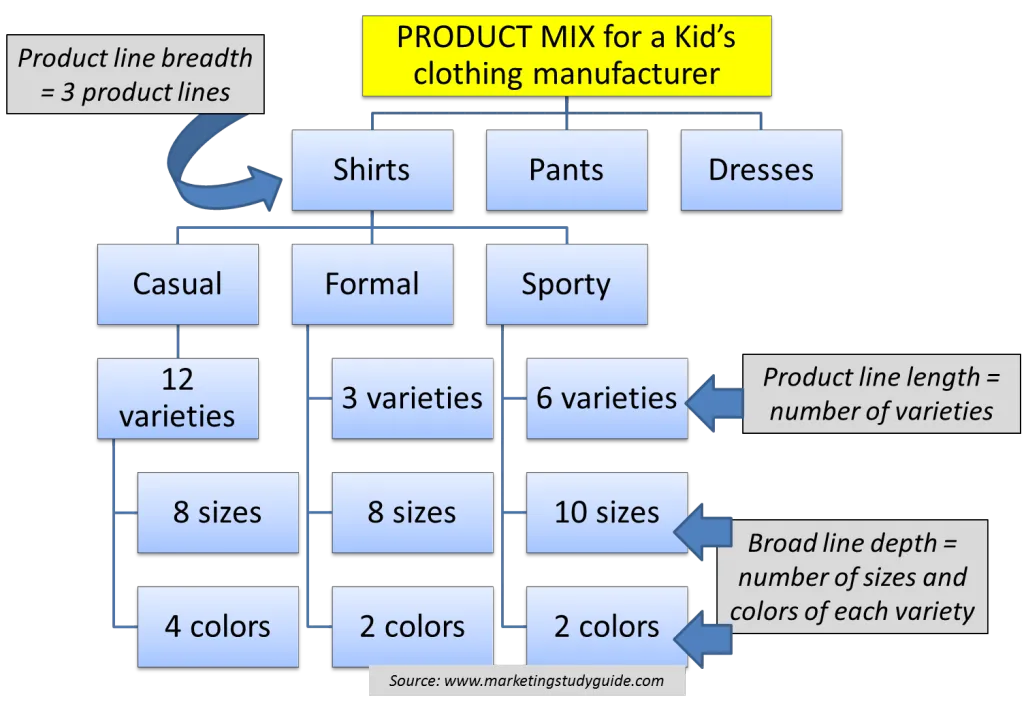
Your Pricing Strategy
The fashion industry comprises producers, manufacturing designers, retailers, and distributors targeted at different consumer segments. There are several saturated niches in the market, making it challenging competition. The clothing business can use different strategies to differentiate its brand and gain a competitive advantage.
By understanding the pricing strategies, you can set the ideal price for your own clothing business. Here are some of the techniques that you can use to set the prices of your clothing brand.
Luxury Pricing Strategy
In the Luxury tier of the clothing business, the prices are closely related to the brand’s image. The Apparel products are connected with the customers’ minds through the self-expression and status of the product.
So the consumer who is buying in this range is more likely to be concerned about the social status of the product rather than the durability of pricing. This strategy focuses on brand positioning leading to setting the pricing structure.
Budget Pricing Strategy
When shopping for clothes, a massive class of customers seeks lower prices. Comparatively to a luxury brand, you are more likely to receive less profitability. In this segment, customers are willing to compromise on the quality to get affordable clothes.
In this case, a bundled pricing strategy works well.
Value Pricing Strategy
The Value pricing strategy sets between the luxury and budget pricing strategy. The main feature of this pricing strategy is to create a balance between quality and costs. It’s simple to understand the value shoppers are neither willing to sacrifice quality for extremely quality clothes nor willing to pay extra for the clothes more than their worth.
The customer in this segment seeks quality products and accessories that last several years. The quality and the durability under the correct pricing is a prime concerns.
Your Distribution Strategy for Clothing Line
The distribution refers to the path of the product from the manufacturer to the end-user. A good distribution network of your clothing line plays an essential part in your business. For example, the fashion apparel manufactured must reach the retailing store to become available to the customers to buy.
Delay in product distribution in the market can result in huge losses, affecting the brand’s value. Here is the primary type of distribution channels that fashion houses can opt from.
Direct Channel
Direct channel refers to the channel where the retailer sources the clothes directly from the manufacturer eliminating any 3rd party. The manufacturer can take total control over the distribution of the goals, making it quite difficult for a retailer to obtain larger quantities at once.
This is a more affordable and cost-effective way of distribution as it doesn’t require any whole seller or 3rd party in between.
Indirect Channel
In this type of distribution, the whole seller plays the role of the middle man between the manufacturer and the retailer. The whole seller reduces the load of the manufacturer. On the other side, the retailer has to pay a higher price when receiving goods, including the commission of the middlemen.
Hybrid Channels
This method is a combination of both channels direct and direct channels. This is mainly used by B2B platforms. The manufacturers hire different distributors or agents to advertise the products or services but still hold authority and control over the products.
The agents or distributors advertise the product on separate channels, connecting the interested party with the manufacturer.
Advertising and Promotion Strategy
Coming up with a new business means a lot of work to do. It’s like never-ending work. Launching your product is just half the side of the equation, while the other half promotes your clothing line in the customer market.
Your product might have the perfect design at an attractive cost point; but if it is not promoted effectively in the market, opportunities may slip through your fingers. Here are some effective strategies to market it effectively.
– Previews of products.
– Introductory offers.
– Contest and Giveaways.
– Email Marketing.
– GMB (Google My Business) promotion.
– Events updates.
– Trade-ins.
– Social media marketing.
– Customer reviews.
– Facebook Ads.
– Blogs and Articles.
Manufacturing Strategy for your Clothing Business

Several complex factors could significantly affect the fashion brand’s growth. Here is a promising strategy for the growth of your clothing business. This involves the success rate of production. These strategies allow the factories to remain competitive and successful.
Here are some of the manufacturing strategies that grow the brand’s ability and help achieve manufacturing success.
Conducting Regular Compliance Evaluation
This means the regulations and standards of the manufacturing process. These regulations are determined and defined by the state, government, the international laws for operating the factories, and procedures in the factories. Moreover, this compliance is also determined by the essential groups in the industry.
So the clothing brand and business must conduct regular compliance to meet the standards. They verify the manufacturers as they meet the standards making it easy for them to manufacture a successful clothing line.
Using IT Advancements to Drive the Project Collaboration and Management
Technology is a top trend in every market. It plays a vital role in making your brand successful. Clothing Brand has lately used advanced technological innovations by implementing the latest methods in their production process.
Bringing advancement doesn’t mean using automated machines. Well, you can use those too, if these are intelligent enough while adopting the advance and new information and utilizing the latest information for optimizing the procedures.
Structuring the Factory
By this, we mean the arrangement of facilities like storage systems, assets in the company, and sewing machines. You can create a practical layout of the factory that can help you save space.
Slight adjustments in the factory can help you improve the workflow and improve efficiency.
Financial Projections for Your Business
Here are lump sum financial projections for opening a clothing store from scratch.
- Fees to register your business in US state – $750.
- Obtaining legal and permits along with the POS software -$1,300.
- Cost of promotion of your clothing business $3,500, costs of flyer printing for a total amount of $3,580.
- Hiring a consultant for your business -$2,500.
- Insurance for your business’s assets, liability, workers, and coverage of other costs – $2,400.
- Renting costs – $105,600.
- Other startup costs like phones and utility deposits- $2,500.
- Operational costs for the initial three months, including salaries of employees, payments- $60,000.
- Startup inventory cost- $70,000.
- Store equipment’s- $13,750.
- CCTVs- $5,000.
- Cots for inauguration- $7,000.
- Other Miscellaneous costs- $10,000.
Total expense $312,980
Launching a successful clothing brand in the US states typically costs an estimated cost of $500,000. For more detailed financial projections, read here.
Wrapping up
So this is how you can create a business plan for your clothing line. Follow all the details in sequence, and this saves you from getting into confusion. We have also mentioned some strategies to target your customer, to market your brand, how you can discover your USP, distribution strategies for your business, and much more.
We hope you will find this article helpful while writing a business plan for your clothing line.



